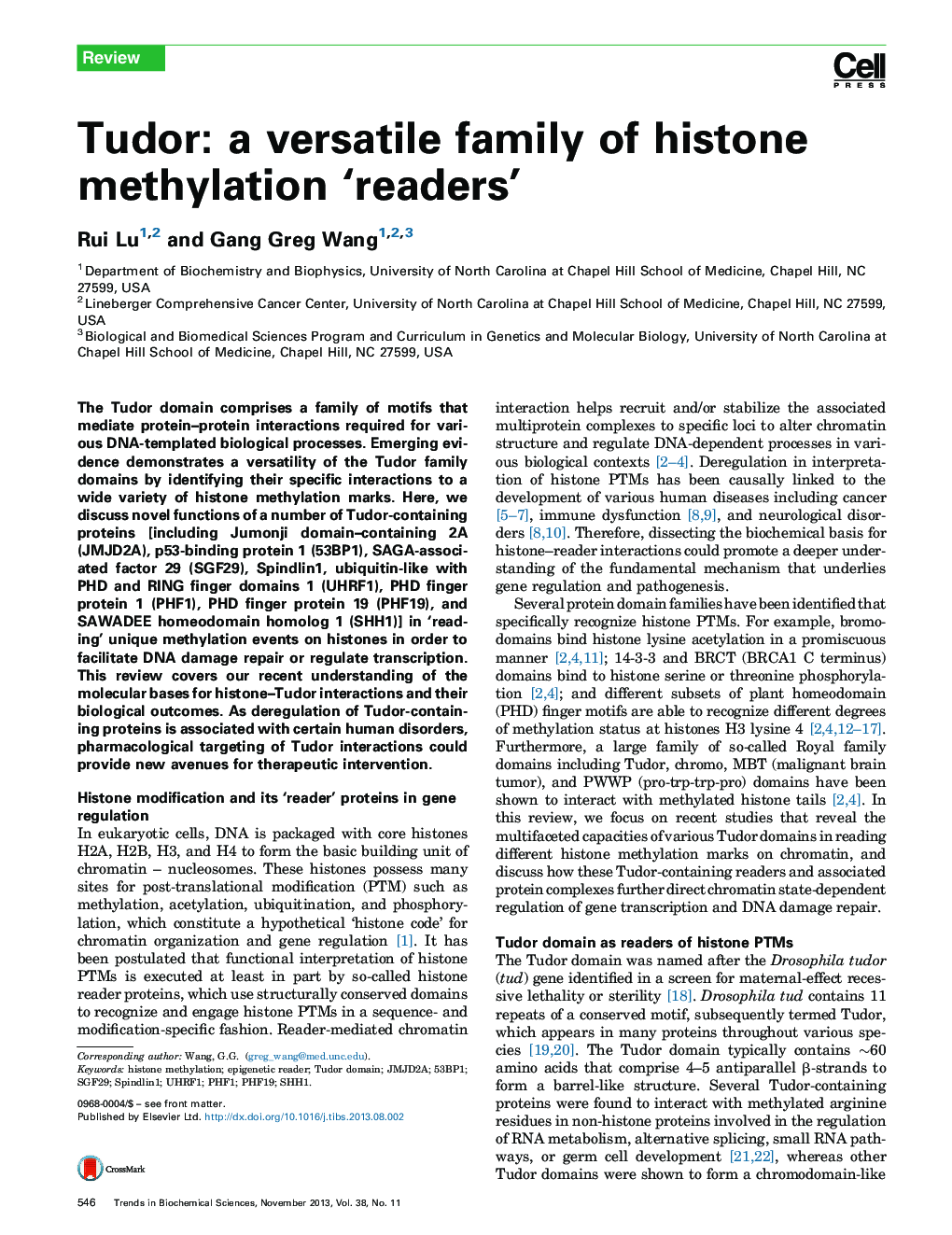| Article ID | Journal | Published Year | Pages | File Type |
|---|---|---|---|---|
| 2030866 | Trends in Biochemical Sciences | 2013 | 10 Pages |
•Evidence reveals the versatility of Tudor in reading various histone methylation.•Tudor domain uses an aromatic cage to accommodate its histone methylation ligand.•Tudor and adjacent modules can combinatorially read multiple histone modifications.•Tudor–histone interaction is critical for regulating various DNA-templated processes.
The Tudor domain comprises a family of motifs that mediate protein–protein interactions required for various DNA-templated biological processes. Emerging evidence demonstrates a versatility of the Tudor family domains by identifying their specific interactions to a wide variety of histone methylation marks. Here, we discuss novel functions of a number of Tudor-containing proteins [including Jumonji domain–containing 2A (JMJD2A), p53-binding protein 1 (53BP1), SAGA-associated factor 29 (SGF29), Spindlin1, ubiquitin-like with PHD and RING finger domains 1 (UHRF1), PHD finger protein 1 (PHF1), PHD finger protein 19 (PHF19), and SAWADEE homeodomain homolog 1 (SHH1)] in ‘reading’ unique methylation events on histones in order to facilitate DNA damage repair or regulate transcription. This review covers our recent understanding of the molecular bases for histone–Tudor interactions and their biological outcomes. As deregulation of Tudor-containing proteins is associated with certain human disorders, pharmacological targeting of Tudor interactions could provide new avenues for therapeutic intervention.
